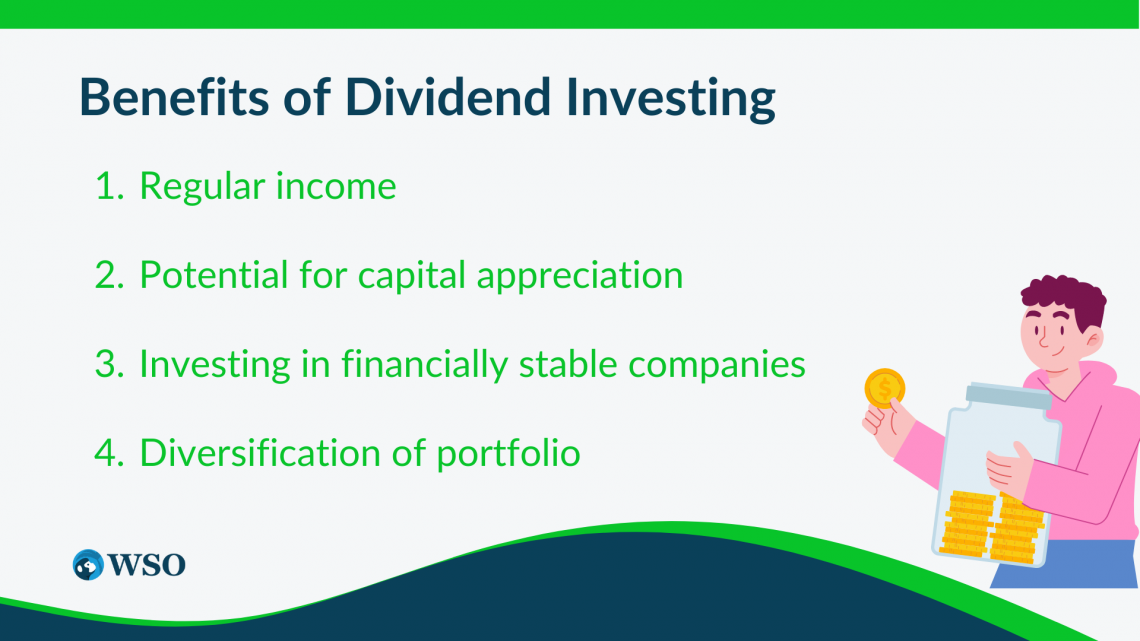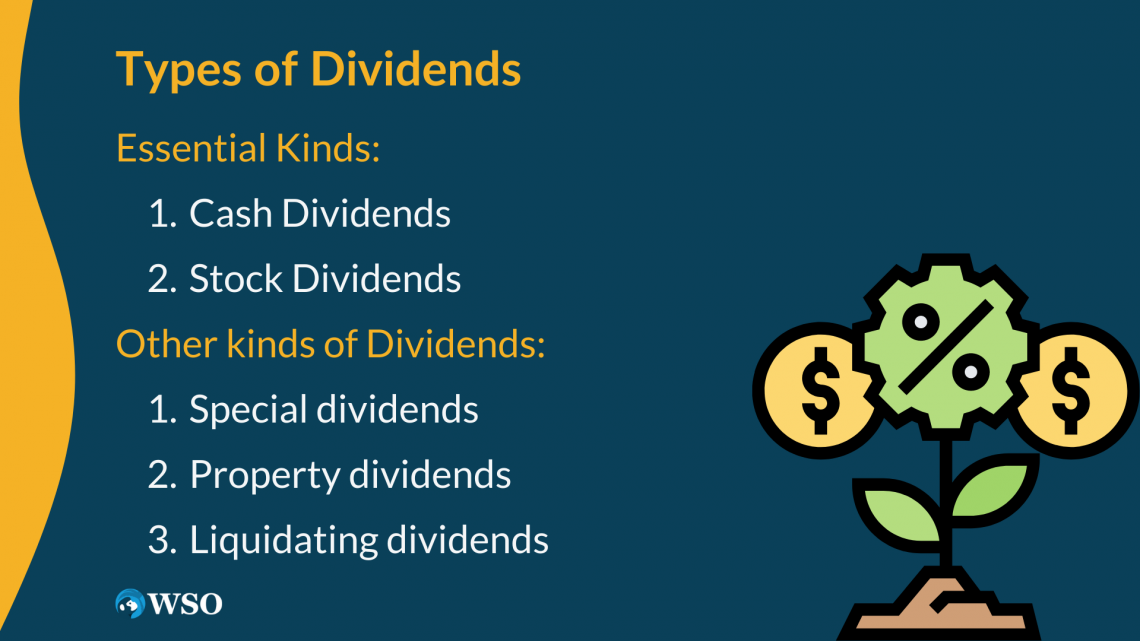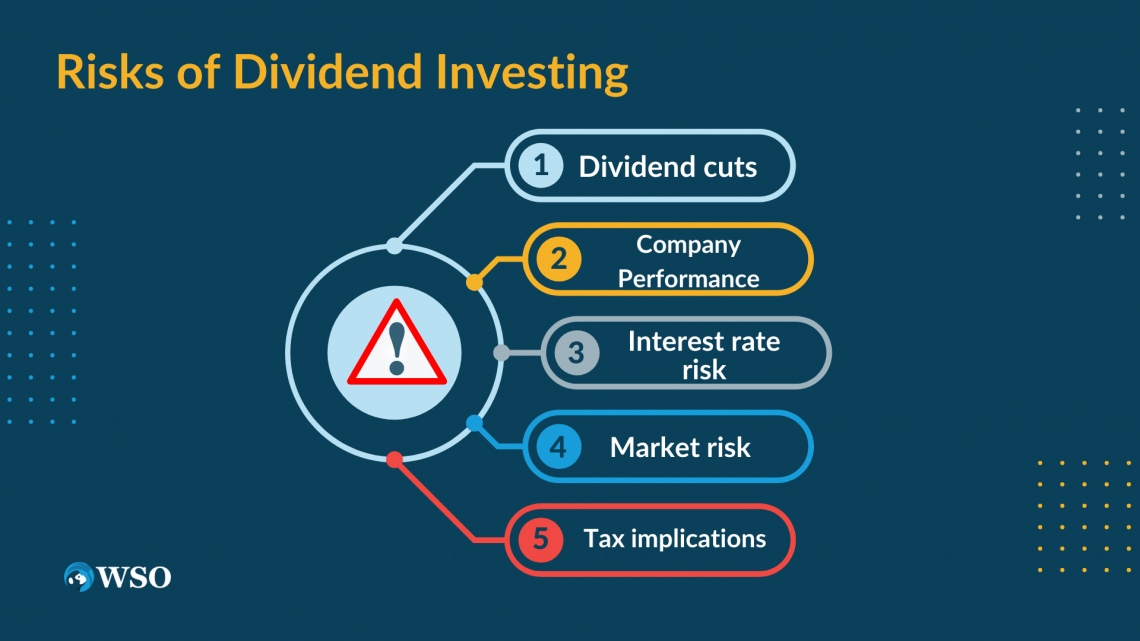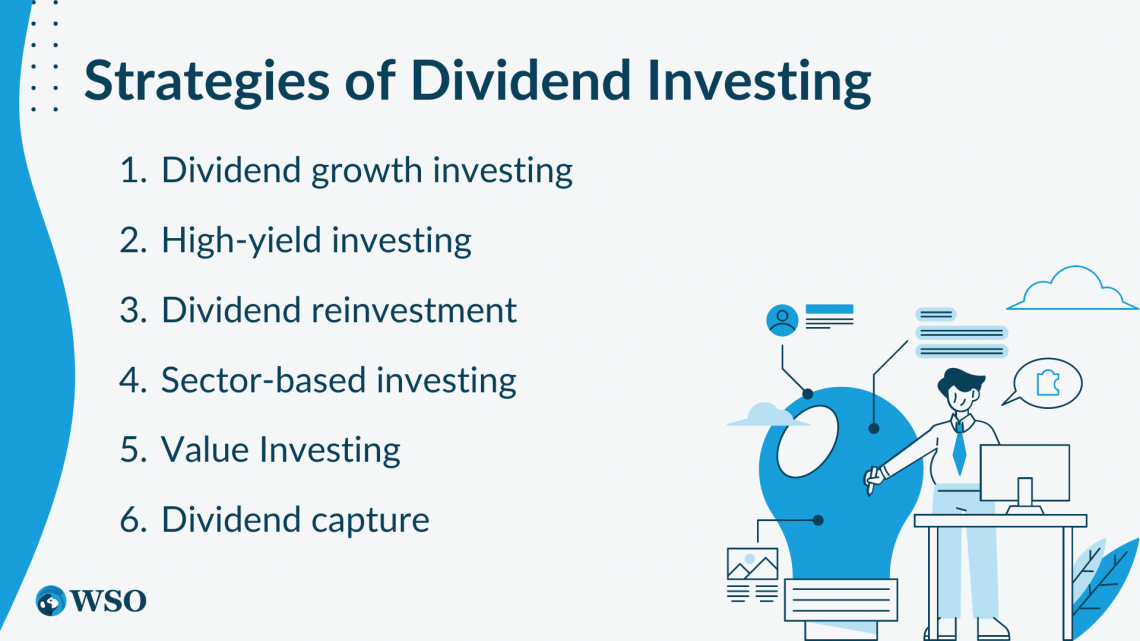Dividend
A dividend is a payment by a company to its shareholders representing a portion of earnings
What Is a Dividend?
Investing is a significant method for creating financial momentum and preparing for what's in store. While there is a wide range of kinds of investments to consider, one methodology that has acquired prevalence lately is dividend (div) investing.

This investing includes buying stocks in companies that deliver divs, which are regular payments made to shareholders from the company's profits.
They can give a constant flow of income for investors. They can be particularly alluring for individuals searching for ways to enhance their retirement income or produce passive income.
Be that as it may, similar to any venture procedure, there are two advantages and dangers to consider about its investing. First, one of the essential advantages of investing in this is the potential for regular income.
Dissimilar to stocks that don't deliver divs, dividend-paying stocks give investors an anticipated source of income. This can be particularly important for retirees or individuals living off their venture income, as it can assist with a steady stream of cash flow.
As well as turning out revenue, dividend-paying stocks can likewise be a decent choice for investors searching for financially stable companies with a long history of profitability.
Companies that deliver them are frequently viewed as safer than those that don't since they have a past filled with creating consistent profits and have exhibited their obligation to return worth to shareholders.

Be that as it may, there are likewise chances related to investing in them. For instance, companies can reduce or eliminate their div payments whenever assuming that they experience monetary hardships or, on the other hand, assuming their earnings decline.
This can be a critical gamble for investors who depend on income from this investment to meet their monetary requirements.
Another potential gamble is market volatility. Like all stocks, dividend-paying stocks can be dependent upon fluctuations in stock costs, which can bring about capital losses for investors.
Furthermore, when interest rates rise, these stocks can become less alluring to investors since they might have the option to procure more significant yields on fixed-income investments like bonds.
Despite these dangers, investing in them can be a decent methodology for investors searching for an equilibrium between income and the potential for capital appreciation.
By zeroing in on companies with a high div yield, a background marked by expanding its payments, or a long history of paying them, investors might possibly profit from both income and capital gains.
In this article, we will investigate some advantages and disadvantages of investing in them and systems for building an enhanced dividend portfolio.
understanding dividends
Companies can distribute their profits to their shareholders by paying divs.

At the point when a company procures profits, it can decide to either reinvest the cash into the business or disseminate it to its shareholders as divs. These may be given as more shares of the company's stock or as cash.
Cash divs are the most widely recognized sort. This is because they are commonly paid out regularly, like quarterly or yearly, and the amount of the div is normally communicated as a dollar amount per share.
For instance, on the off chance that a company delivers a div of $0.50 per share and an investor claims 100 shares, they would get its installment of $50.
Stock divs include issuing extra shares of the company's stock to existing shareholders. For instance, if a company gives a 10% stock div, an investor who claims 100 shares would get 10 extra shares.
These are generally presented by companies that need to moderate their cash and reinvest it into the business.
The dividend yield is another significant element to consider while investing in dividend-paying stocks. It is determined by partitioning the yearly div installment by the current stock price.
Its yield, for example, would be 4% if an organization conveyed a yearly div of $2 per share and the current stock price was $50.
A higher yield may indicate that a stock is undervalued or that a larger percentage of profits are distributed as divs by the business.
At last, the dividend payout ratio is a proportion of the number of a company's earnings delivered as divs. It is determined by partitioning the yearly div installment by the company's earnings per share.

Dividend Payout Ratio = Total divs/ Net Income
A high payout ratio can show that the company is paying out a lot of its earnings as divs and might not have sufficient cash left over for different purposes, for example, reinvesting in the business or paying off obligations.
Benefits of Dividend Investing
They are a dispersion of a company's profits to its shareholders. When a company creates a gain, it can decide to reinvest that profit once more into the business to fuel growth, or it can convey a portion of the profit to its shareholders as divs.

Here is a portion of the benefits of investing in stocks that pay it:
1. Regular income
They furnish investors with a regular income stream, which can be particularly significant for retirees who depend on speculation income to meet their living expenses.
Dissimilar to security yields, which might fluctuate with interest rates, div payments from stable companies will more often than not be moderately reliable and unsurprising.
2. Potential for capital appreciation
Dividend-paying stocks can offer income and capital appreciation potential. In addition, companies that reliably deliver them are frequently financially stable and profitable, which can prompt long-term growth in the worth of the stock.
Furthermore, companies incrementing their divs over the long haul can develop a revenue stream and potential for capital gains.
3. Investing in financially stable companies
Companies that deliver them are usually financially stable and have a long-term history of profitability. This can furnish investors with a feeling of safety, realizing they are investing in companies that are less inclined to experience financial difficulties or bankruptcy.
4. Diversification of portfolio
Investing in these types of stocks can assist with diversifying a portfolio and reducing risk. In addition, investors can spread their gamble across various areas and ventures by investing in the scope of companies that deliver them.
Moreover, dividend-paying stocks might be less volatile than non-dividend-paying stocks, which can assist with diminishing the general gamble of a portfolio.

Hence, these stocks can furnish investors with a scope of benefits, including a regular income stream, the potential for capital appreciation, investing in financially stable companies, and diversification of portfolios.
It's critical that they are not guaranteed and might be cut or suspended, assuming a company experiences financial difficulties. Therefore, investors should painstakingly assess a company's financial health and the history of paying them before investing.
If you are interested in div investing, look here to learn about stocks that pay monthly divs.
Types of dividends
Cash and stock divs are the two essential kinds of it that organizations can decide to pay to their shareholders.

1. Cash divs
They are the most widely recognized kind of div. They are payments made in cash to shareholders, generally on a regular premise, like quarterly or yearly. Its amount is normally communicated as a dollar amount per share.
For example, if a business delivers a div of $0.50 per share and an investor claims 100 shares, its installment would be $50. These provide investors with a regular income stream and can be especially attractive to those seeking steady and predictable returns.
2. Stock divs
They entail issuing extra shares of the company's stock to current shareholders. For instance, if a business distributes a 10% stock div, a shareholder who owns 100 shares would get 10 more.
Companies that wish to save and reinvest their cash into the firm while still giving shareholders value frequently provide them. Raising the number of outstanding shares can also be utilized to lower the price of shares for novice investors.
There are a few other divs that businesses may decide to pay:
1. Special divs
A firm's extra payments on top of its regular divs are one-time sums. They are usually paid when a company has excess cash on hand or wants to reward shareholders for exceptional performance.
2. Property divs
These are payments made in the form of assets other than cash or stock. For example, a company might distribute inventory or real estate as a property div.
3. Liquidating divs
These are divs given to shareholders as part of a company's liquidation. They are paid from the company's remaining assets after all other creditors have been paid.
Note
In general, for investors who wish to make wise investing decisions, it's critical to comprehend the various dividend sorts.
Cash divs are the most typical sort of payout, but other types are also significant to consider.
Investors should carefully evaluate a company's div policy and financial health before making investment decisions.
Risks of Dividend Investing
While dividend-paying stocks can offer investors a few benefits, there are risks related to investing in companies that pay them. Here is a portion of the vital risks to consider:

1. Dividend cuts
Companies are not expected to deliver divs, and their payments are not guaranteed. For example, a company might decide to reduce or suspend its div payments if it experiences financial difficulties or the necessity to monitor cash for different purposes.
If a company cuts its div, it can bring about a lessening in the stock's worth and a reduction in income for investors.
2. Company performance
The company's performance can likewise influence its capacity to deliver them. So, for example, if a company's profits decline, it might need to reduce its div payments or quit paying them out and out.
This way, assessing a company's financial health and future possibilities before investing in its stock is significant.
When interest rates rise, dividend-paying stocks can become less alluring to investors. This is because proper income investments, like bonds, may offer higher yields, making them an engaging choice.
Thus, dividend-paying stocks might experience a lessening popularity, which can bring about a decline in their worth.
4. Market risk
All stocks are liable to market risk, which alludes to the chance of misfortune because of fluctuations in the securities exchange. Although stocks that pay them are usually considered more stable and less volatile than those that don't, this risk is increased for them.

In any case, changes in the market can cause drops in the stock prices of even the most reliable and successful businesses.
5. Tax implications
Their payments are liable to taxes, which can influence the net return for investors. Also, tax laws and rates can change over the long haul, influencing the engaging quality of dividend-paying stocks as speculation.
Investors should painstakingly assess the risks and benefits of investing in dividend-paying stocks before pursuing venture choices.
While they can turn out a regular revenue stream and have the potential for capital appreciation, they accompany risks, for example, div cuts, company performance, interest rate risk, market risk, and tax implications.
Investors can settle on informed conclusions about their investments by considering these risks and assessing a company's financial health and possibilities.
Strategies of Dividend Investing
Investors can increase the advantages of investing in dividend-paying equities using various tactics. Here are some common strategies:

1. Dividend growth investing
This strategy involves investing in companies with a history of consistently increasing their div payments.
Investors can benefit from both this income and capital appreciation by focusing on companies with a track record of growth.
2. High-yield investing
This strategy includes investing in companies with high div yields, which is the ratio of the annual div installment to the stock's price.
High-yield investing can give investors a constant flow of income, yet it is critical to cautiously assess the financial health and maintainability of the company's div payments.
3. Dividend reinvestment
This strategy includes reinvesting the divs from stock once more into that equivalent stock instead of accepting them as cash.
Note
By reinvesting divs, investors can potentially benefit from compound growth over time.
4. Sector-based investing
This strategy involves investing in companies within a specific sector that pays high divs. For example, utility companies are often known for paying consistent and high divs.
5. Value Investing
This strategy involves investing in undervalued stocks with the potential for price appreciation and div growth. Conversely, investors can benefit from both capital appreciation and div income by focusing on stocks undervalued by the market.
6. Dividend capture
This strategy includes buying a stock not long before the ex-dividend date (the date on which stock exchanges are without the div), catching the div installment, and afterward selling the stock presently.
This strategy can be risky and is often utilized by active traders instead of long-term investors.
Overall, there are a few strategies to accomplish their financial objectives.
Note
Via cautiously assessing a company's financial health and div strategy and considering factors like growth, yield, and area performance, investors can settle on informed conclusions about their div investments.
Conclusion
In conclusion, they are a significant part of investing that can give investors a consistent income stream and the potential for long-term growth.

Dividend-paying stocks can offer a few benefits, including
- income dependability,
- the potential for capital appreciation,
- lower risk contrasted with non-dividend-paying stocks.
Nonetheless, investing in these stocks additionally accompanies risks, including
- dividend cuts,
- company performance,
- interest rate risk,
- market risk,
- tax implications.
To boost the benefits of investing in these stocks, investors can utilize different strategies, for example:
- dividend growth investing,
- high-yield investing,
- dividend reinvestment,
- area-based investing,
- esteem investing,
- dividend capture.
Every strategy has its benefits and risks, and investors ought to painstakingly assess their speculation goals and risk resilience before choosing a strategy.
While considering these stocks, investors ought to likewise assess the financial health and possibilities of the company, its div policy, and any progressions in tax laws and guidelines.
By remaining informed and staying up with the latest market patterns and financial circumstances, investors can arrive at informed conclusions about their investments of this kind.

Generally, these can be a significant source of income and growth for investors, yet it is critical to assess the risks and benefits related to dividend-paying stocks painstakingly.
With proper examination and investigation, investors can pursue informed choices and potentially receive the rewards of investing in dividend-paying stocks over the long term.
Likewise, investors ought to consider diversifying their portfolios and not depending entirely on these stocks for income and growth. A very broadened portfolio can assist with relieving risks and give a superior opportunity for long-term achievement.
At long last, it is vital to recollect that investing in the financial exchange conveys innate risks, and there is no assurance of profits.
Nonetheless, with a strong comprehension of divs and careful consideration of speculation strategies, investors might potentially profit from the valuable income and growth open doors these stocks can offer.
In synopsis, they are a significant part of investing that can offer different benefits.
By understanding the risks and benefits related to dividend-paying stocks and utilizing sound venture strategies, and cautious assessment of companies, investors might potentially receive the benefits of div investing over the long term.
Dividends FAQs

These are a portion of a company's earnings that are dispersed to its shareholders on a regular premise. They can be paid as cash, stock, or different resources.
Investors can evaluate a company's financial statements, earnings reports, div history, and management team by looking at its financial condition and potential.
Investors ought to likewise think about the business and competition and any administrative or economic factors that might influence the company's performance.
By leading exhaustive exploration and examination, investors can settle on informed conclusions about the potential risks and prizes of investing in a specific company's dividend-paying stocks.
These can be taxed at various rates depending upon the sort of div and the singular's tax bracket. For example, qualified divs are taxed at a comparable rate as long-term capital gains, while non-qualified ones are taxed at the solitary normal income tax rate.
Investors should figure out the tax implications of their div income and talk with a tax proficient if vital.
Some normal div ratios used to assess stocks incorporate the div yield, payout, and div coverage ratios.
The div yield is the annual div installment separated by the stock price, communicated as a percentage.
The payout ratio is the percentage of earnings delivered out as divs.
The dividend coverage ratio is the ratio of earnings to divs paid.
These ratios can assist investors in assessing the sustainability of a company's div payments and general financial health.
During economic uncertainty or market volatility, companies might confront financially provokes that influence their capacity to keep paying them.
Companies may likewise decide to preserve cash and suspend or reduce div payments to zero in on keeping up with their operations and financial steadiness.
Investors need to consider the general financial health of a company and its capacity to keep paying them during testing times before settling on a venture choice.




or Want to Sign up with your social account?